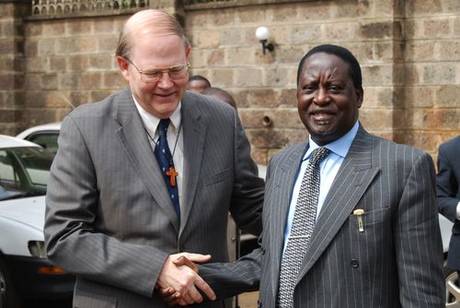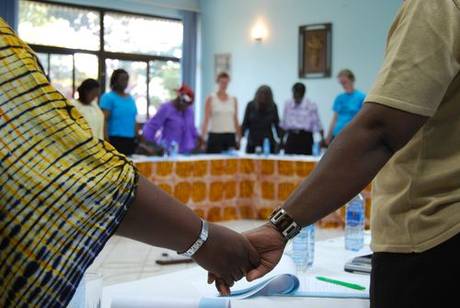Kenyan churches receive WCC solidarity visit
30 January to 3 February, 2008 Read more about the Kenya visit
The entry to the Kenyan Rift Valley. Fertile land, historical grievances and a very complex tribal situation have turned the valley into the epicentre of the crisis.
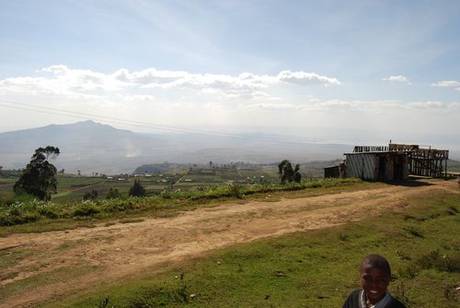
Some 300,000 people had to flee their homes because of the violence unleashed after the contested presidential election of 27 December. About 1,000 people were killed.
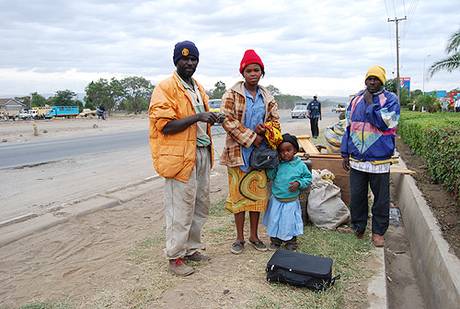
World YWCA general secretary Nyaradzai Gumbonzvanda [left] listens to women in Mauche. "Our youth are unemployed, our widows without assistance, we can't go to town, there is no aid for us."
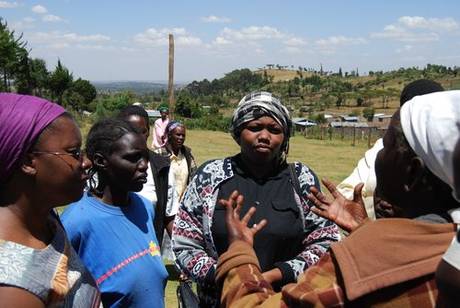
Burnt-down houses and looted shops are a common sight in the Rift Valley. The collapse of tourism and exportations is the economic face of the crisis.
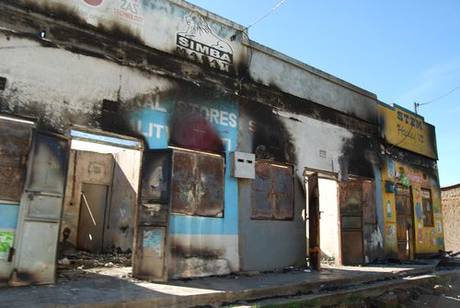
Members of the WCC Living Letters team along with staff of the National Council of Churches in Kenya inspected destroyed property in the Rift Valley's Molo district, near the Nakuru city.
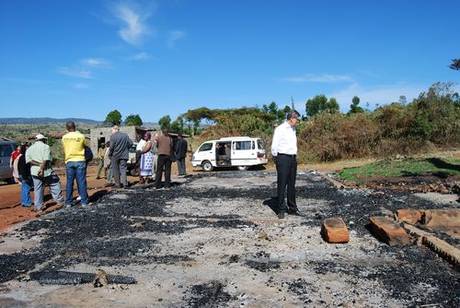
Children of the Kikuyu community in Kihingo. With no schools to go and the trauma of forced displacement, children, alongside women, are the most affected by the violence of the conflict.
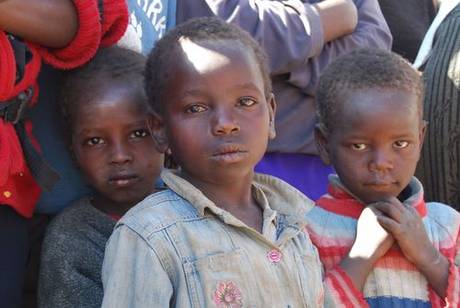
The WCC Living Letters team shared prayers with members of the Kikuyu community in Kihingo. "The church in the world cares deeply about you", said the team leader Rev. Dr Clifton Kirkpatrick (center), stated clerk of the Presbyterian Church (USA).
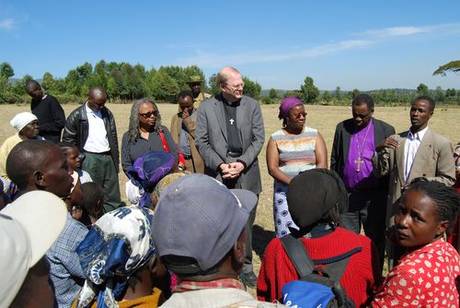
Graham McGeoch, from the Church of Scotland, greets a young member of the Kalenjin community in Mauche, in the Molo district, near the Rift Valley city of Nakuru.
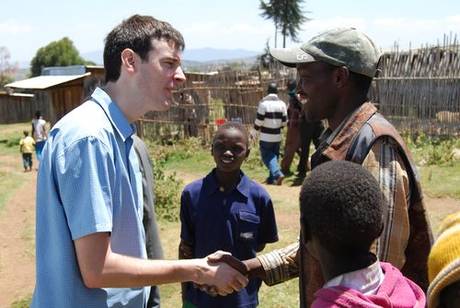
WCC Living Letters team leader Kirkpatrick addresses a spontaneous gathering in Mauche. "We, the churches in the US, received a Living Letters visit like this after the attacks of September 11, 2001, and it meant a lot to us."
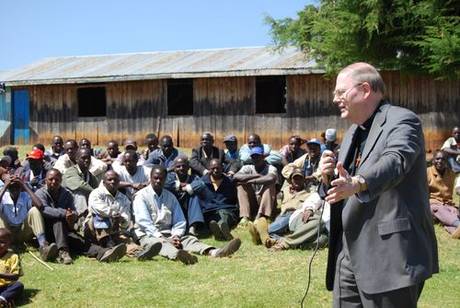
Robert Bett [center], a young member of the Kalenjin community in Mauche, and his friends want a change. "We want a democratic, fast growing Kenya, a Kenya with a future."
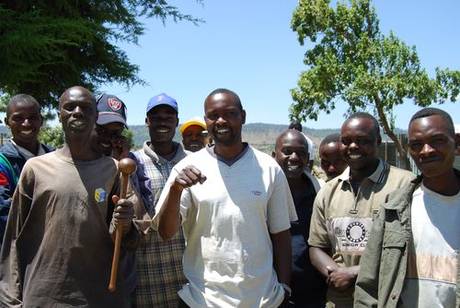
Displaced people sing and dance during a worship at the Tigoni camp near Limuru, in the outskirts of Nairobi. Many churches bring aid and pastoral care to the camps.
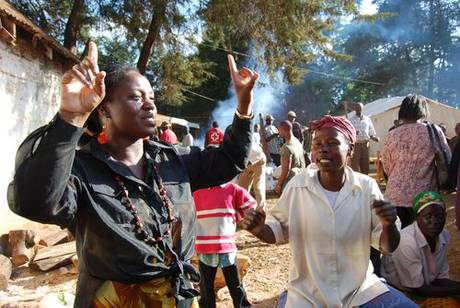
Red Cross staff Gitonga Mugambi briefs members of the WCC Living Letters team and local pastors on the situation of some 6,000 displaced people living in the Tigoni camp.
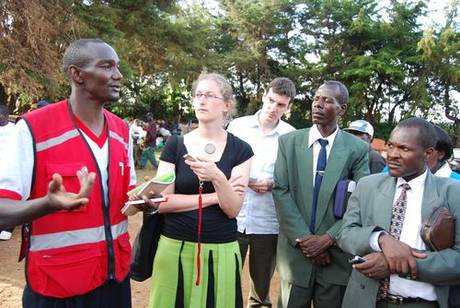
Frederic Wekesa Khisa and his family at the Tigoni camp. They are members of the Luhya tribe. He wanted to go back to their ancestral home.
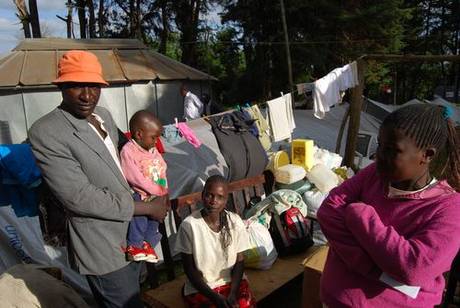
Dr Geeske Zanen, a World YWCA board member from the Netherlands, looks at remains of houses burnt in the Kibera slum, Nairobi, home to about one million people.
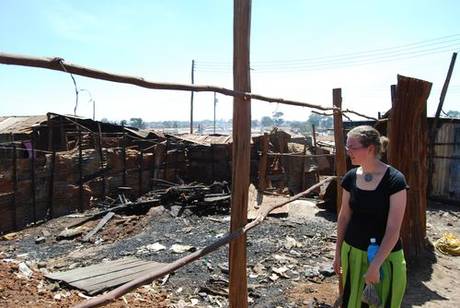
In the capital city of Nairobi there were no tribal clashes - except in the Mathare and Kibera slums - and for many life went on almost normally.
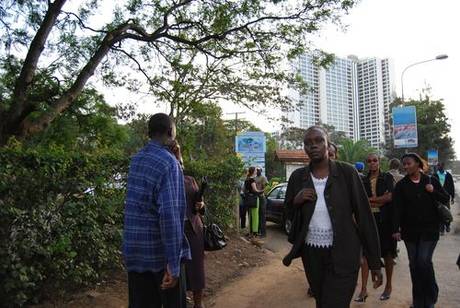
Clifton Kirkpatrick and Rev. Canon Peter Karanja, general secretary of the National Council of Churches of Kenya (NCCK), which hosted the visit of the WCC Living Letters team. "Kenya is large enough for all of us to have a place", Karanja said.
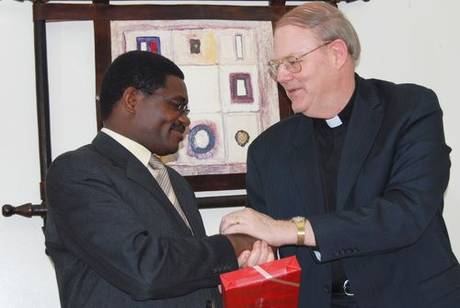
From left to right: Bishop Moffat Cleoppa, Archbishop Njeru Wambugu and Ms Hellen Muchogu, members of the NCCK Nairobi regional committee. Churches have mobilized their members to address the needs of those affected by the crisis.
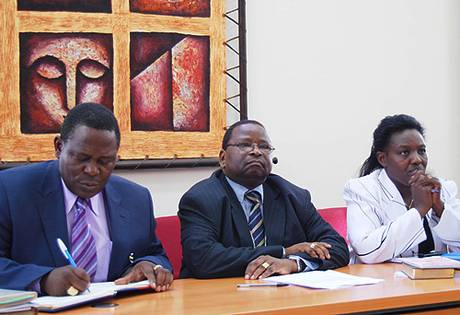
The WCC team prayed with Kenyan vice-president Musyoka and other government officials. The team's message: "Kenyans would like to see their political leaders affirming peace and sorting out their differences, for which a political compromise is needed."
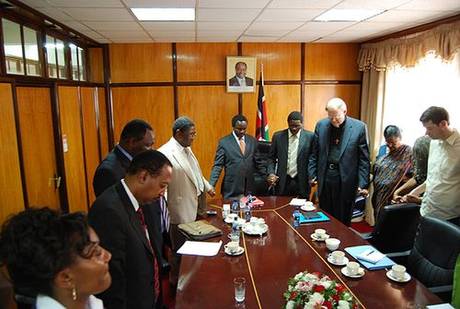
All photos © Juan Michel/WCC
High resolution versions of these pictures are available upon request.



